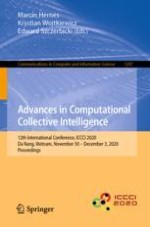2020 | OriginalPaper | Chapter
K-Means Clustering for Features Arrangement in Metagenomic Data Visualization
Authors : Hai Thanh Nguyen, Toan Bao Tran, Huong Hoang Luong, Trung Phuoc Le, Nghi C. Tran, Quoc-Dinh Truong
Published in: Advances in Computational Collective Intelligence
Publisher: Springer International Publishing
Activate our intelligent search to find suitable subject content or patents.
Select sections of text to find matching patents with Artificial Intelligence. powered by
Select sections of text to find additional relevant content using AI-assisted search. powered by
